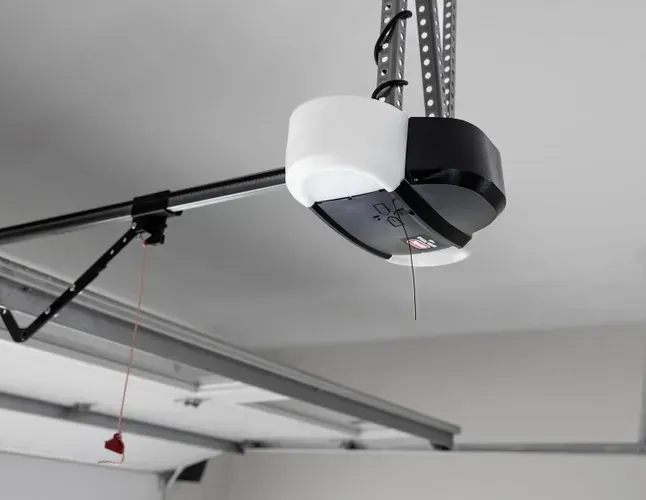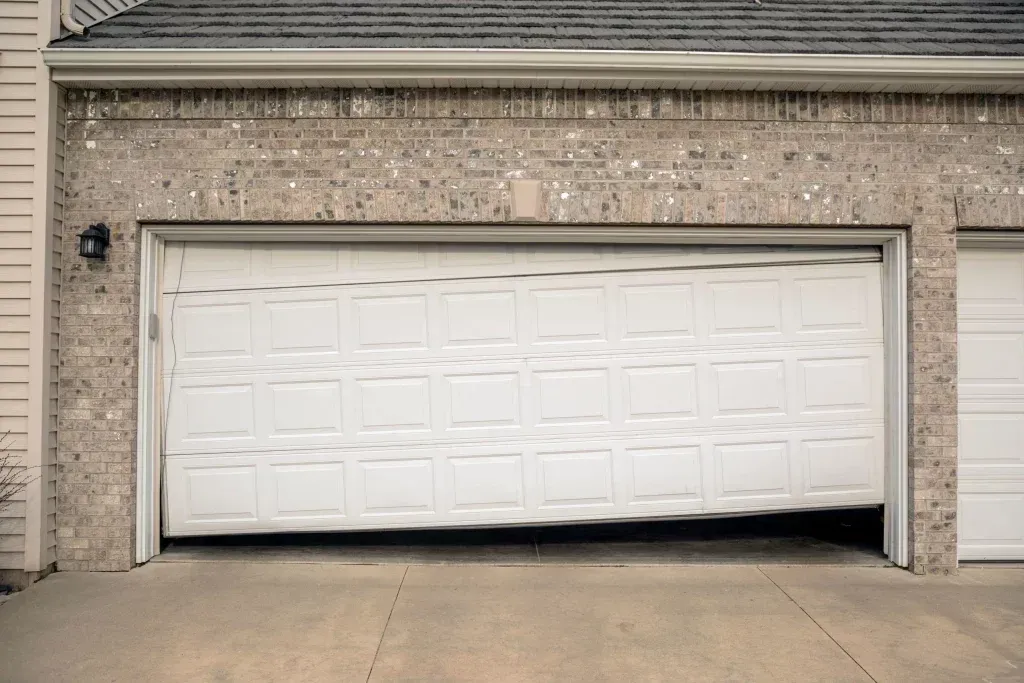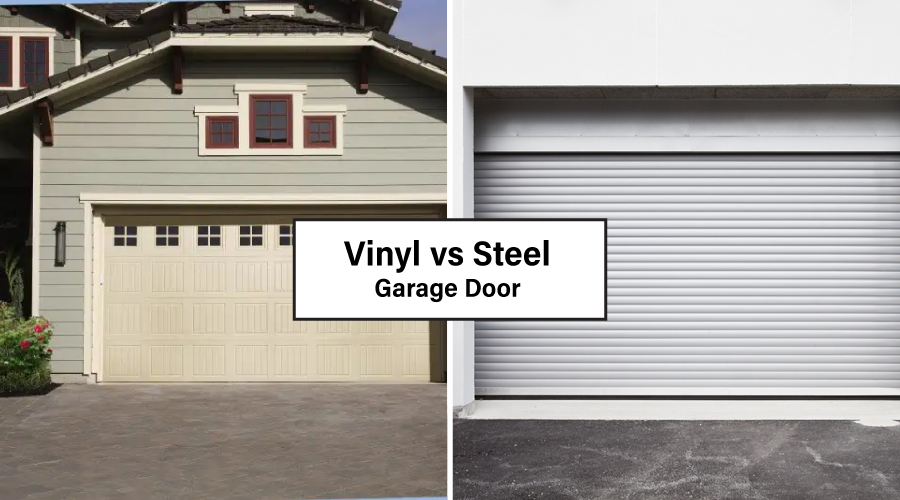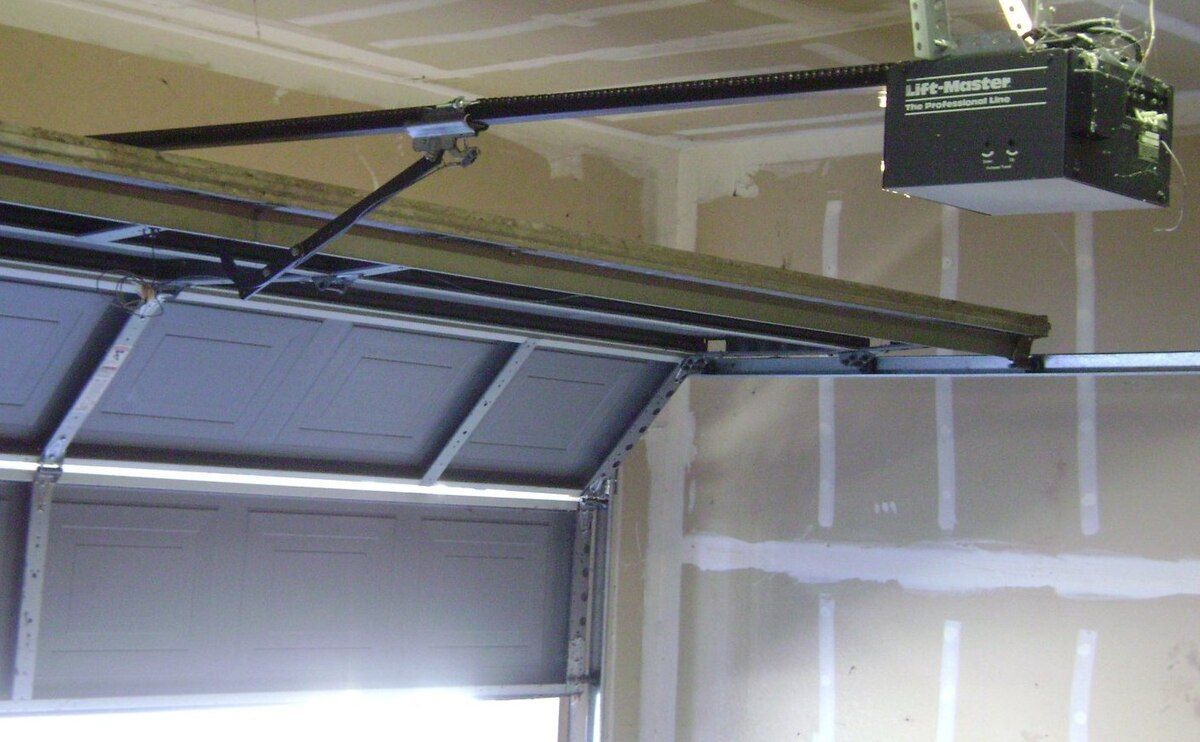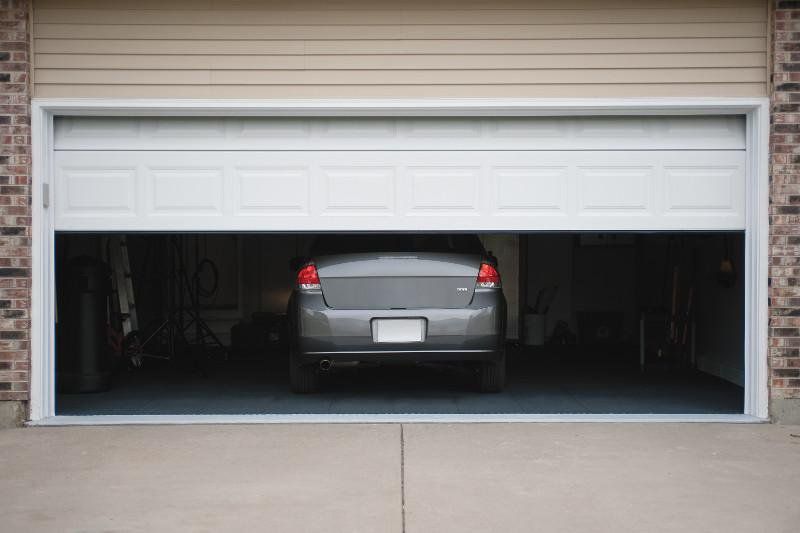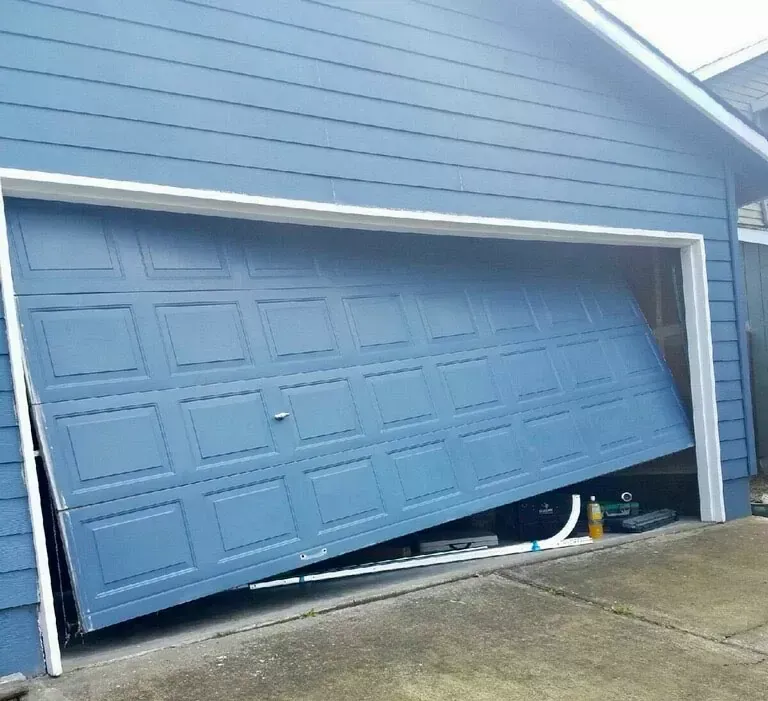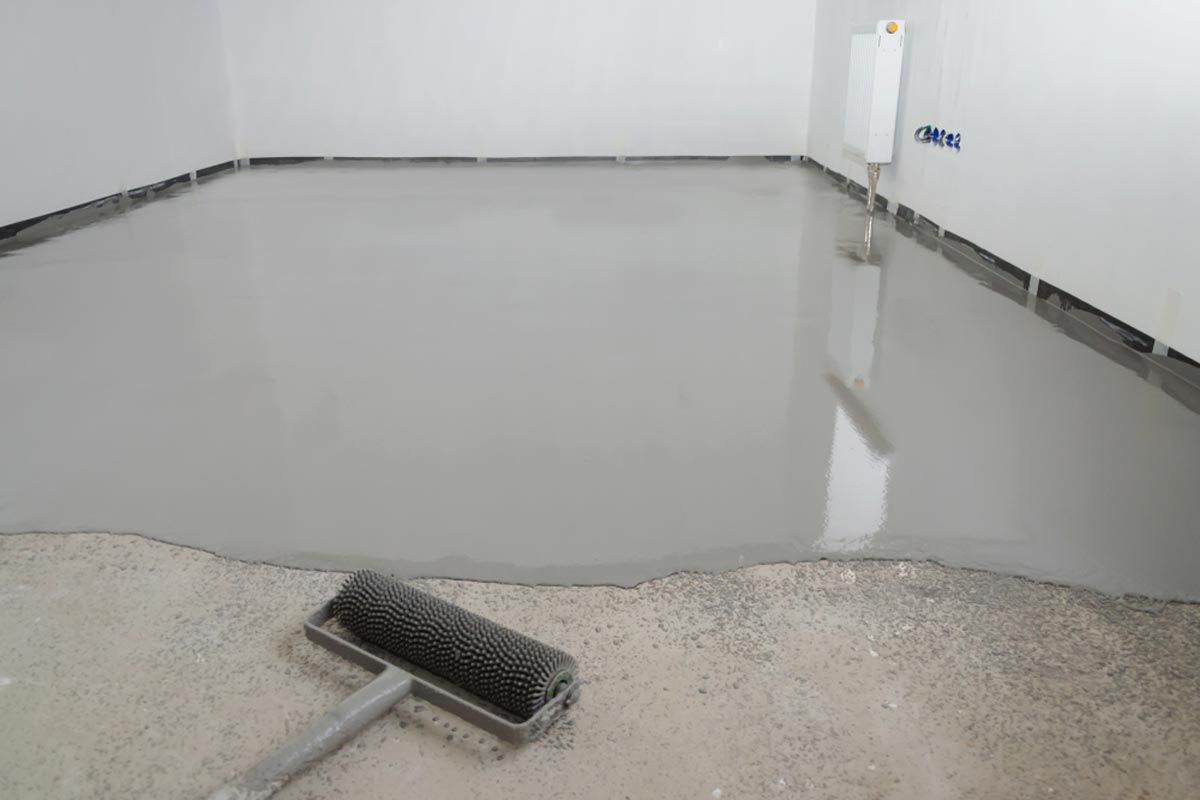How to Tell If Your Garage Door Opener Needs Reprogramming or Replacement
TLDR;
If your garage door opener is intermittently unresponsive, recently experienced a power outage, or had a remote battery replaced, reprogramming may solve the issue. But if it's over 10 years old, making grinding noises, or opening and closing erratically, it's likely time for a
full replacement.
Colorado Homeowners: Garage Opener Problems Aren’t Always What They Seem
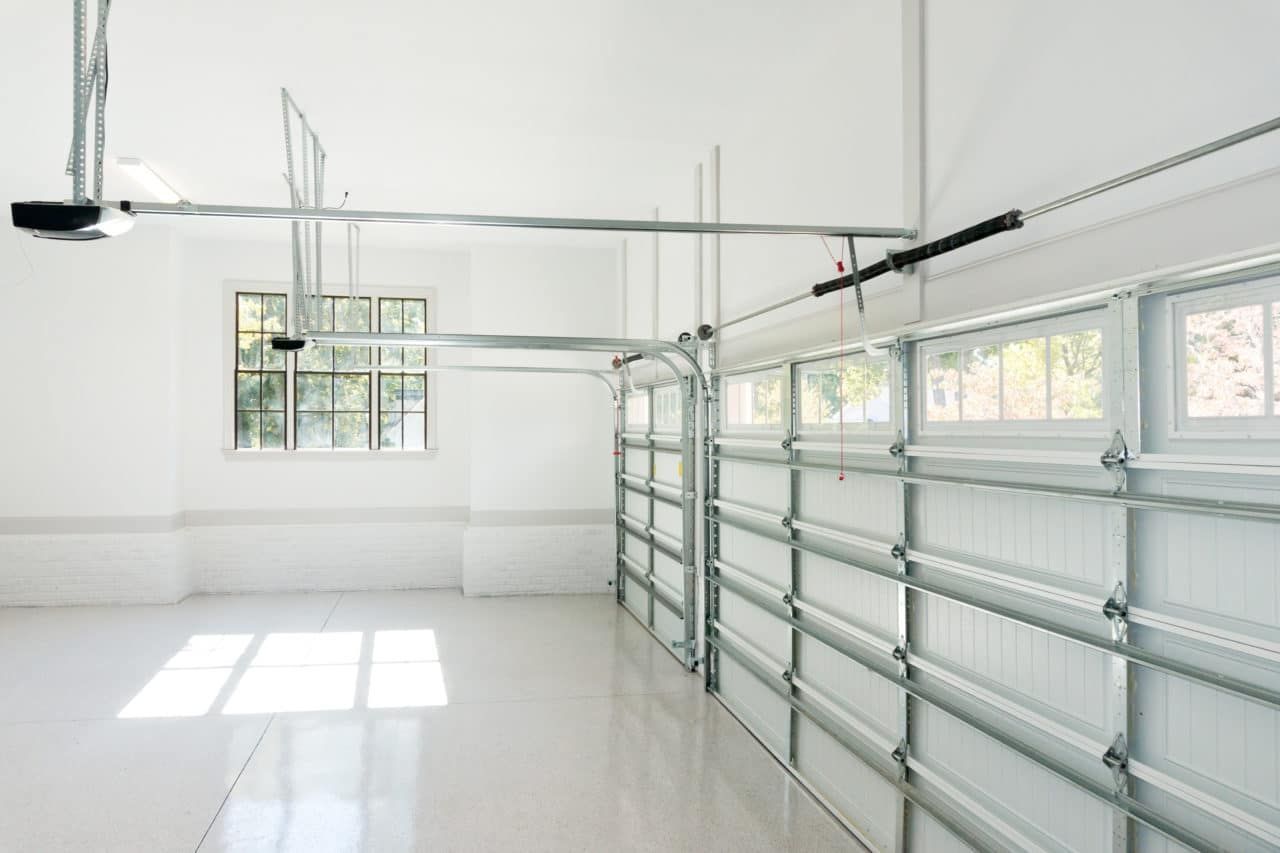
In Colorado, where winter mornings freeze sensors and summer dust clogs mechanisms, garage door openers take a beating. At Smart Garage Door, we often get one question from both homeowners and businesses:
“Do I need to reprogram my garage opener, or is it time to replace it entirely?”
This guide breaks it all down. We’ll start by helping you spot minor issues that a quick reset can fix—then walk you through major red flags that call for a full replacement.
Reprogramming vs Replacement: What Causes Garage Door Opener Malfunctions?
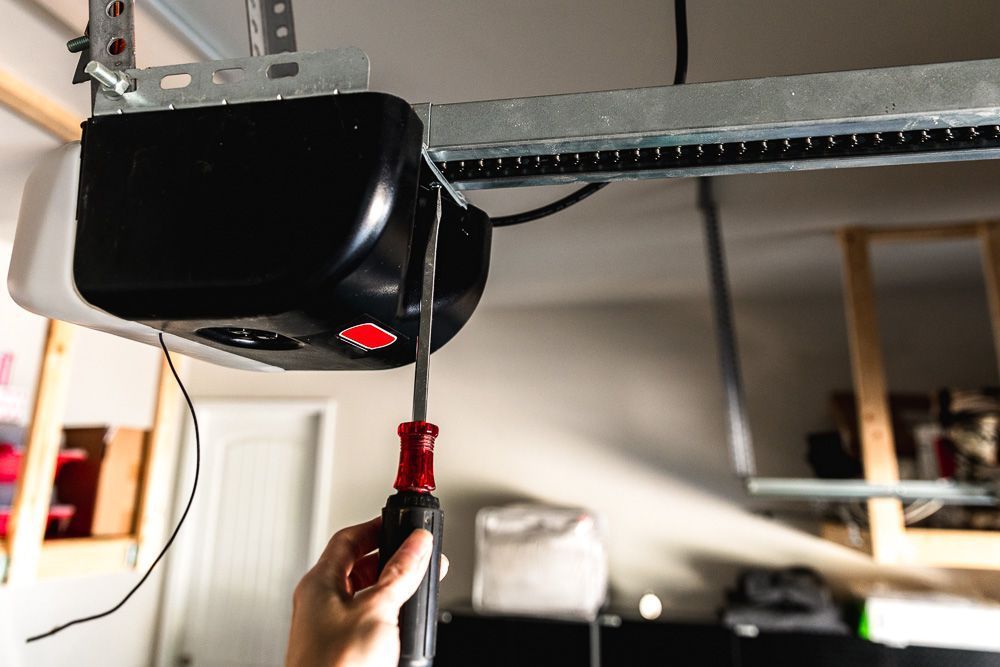
Openers fail for many reasons. Before replacing anything, rule out the simple fixes.
Reprogramming Might Be Enough If:
- Your remote stopped working after a battery change
- You had a recent power outage
- The
keypad or Homelink in your car isn’t syncing
- The opener works
sometimes, but not always
These scenarios usually mean your opener lost its connection or forgot its saved codes. That’s where reprogramming comes in.
Signs It Only Needs Reprogramming
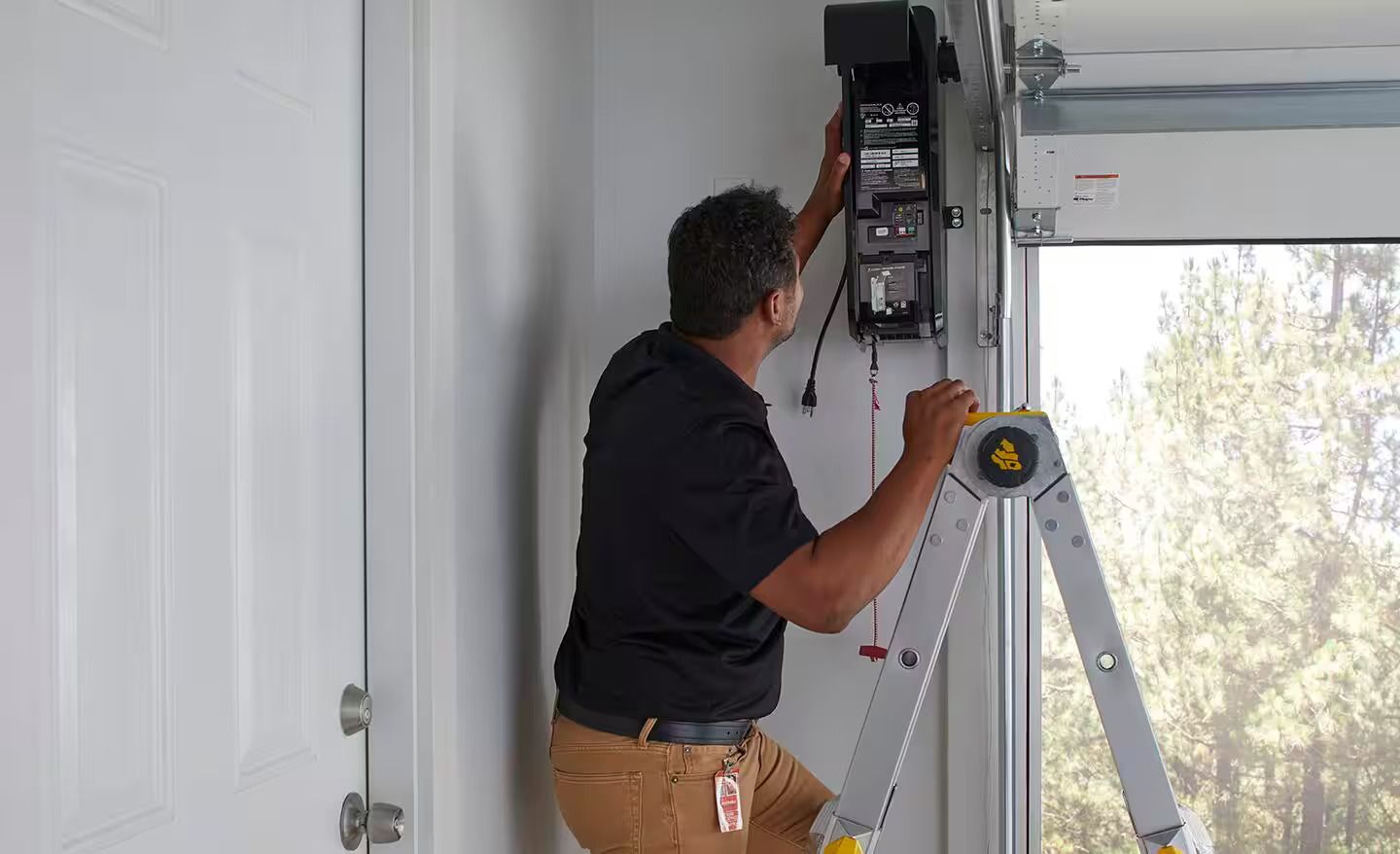
Before you grab your toolbox or call for a new opener, check for these signs:
- Blinking LED light on the opener (often signals code reset needed)
- Remote has fresh batteries, but no response
- Opener works from the wall switch, but not the remote or keypad
- Keypad or Homelink needs syncing after battery replacement
- Intermittent response, especially after a power surge or electrical storm
Common Colorado Triggers
The Colorado climate is especially tough on electronics:
- Power outages from winter storms can reset openers
- Extreme cold can affect sensor alignment and remote communication
- Dust accumulation in summer months may interfere with sensor visibility
- Condensation or frost can freeze photo-eye sensors temporarily
How to Reprogram Garage Door Opener (DIY Guide)
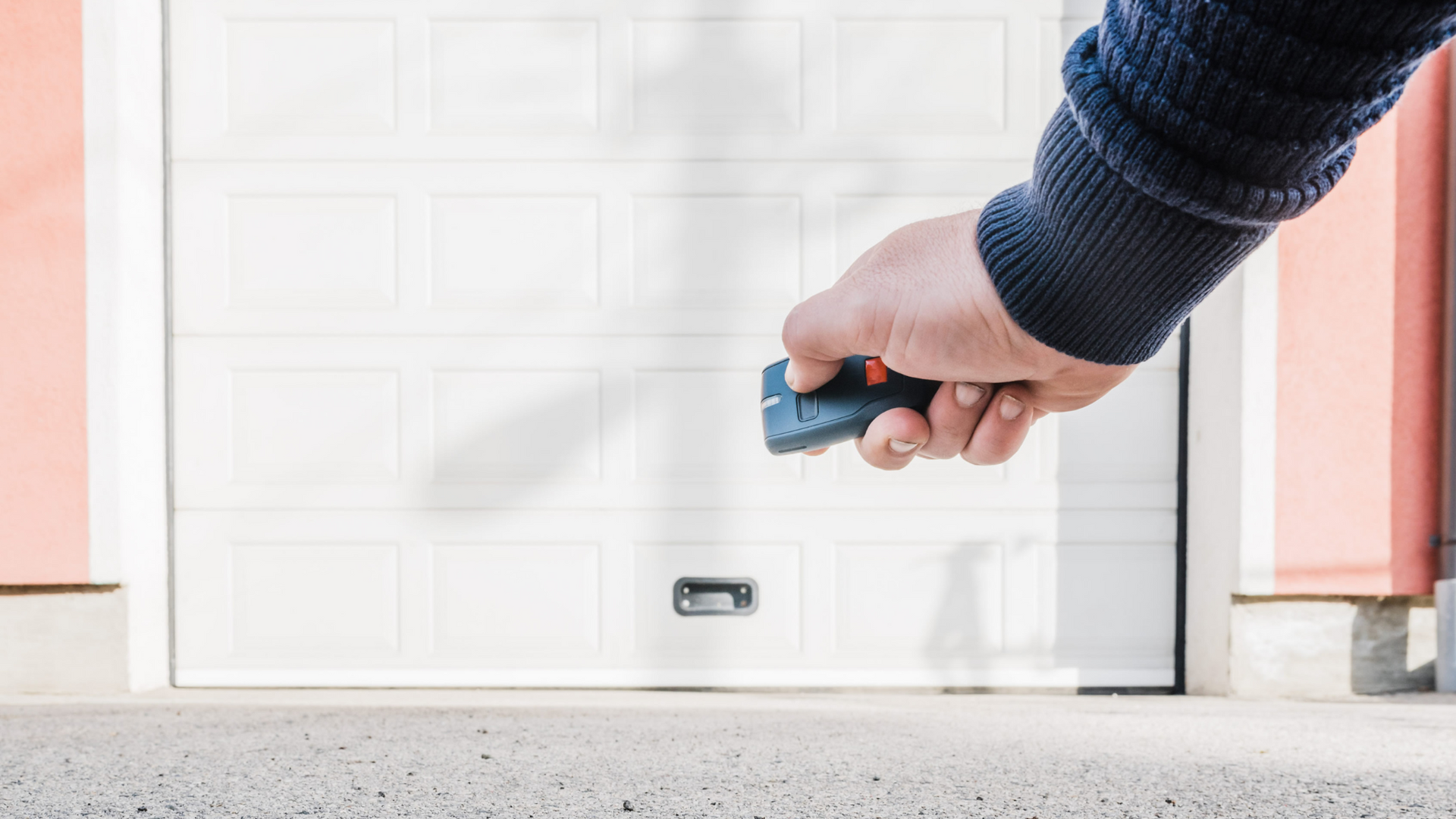
If reprogramming is all you need, the process is straightforward.
Tools You’ll Need:
- A ladder
- The opener’s
manual (or your smartphone to look up the brand)
- Fresh batteries for the remote
- Small screwdriver (for some keypads or wall buttons)
Step-by-Step:
- Locate the “Learn” button
- Found near the antenna on the opener motor (colors vary: red, yellow, purple)
- You may need to remove a small cover
- Clear old codes
- Hold down the “Learn” button for 6–10 seconds until the LED turns off
- Re-sync remote
- Press “Learn” again (LED turns on)
- Within 30 seconds, press the button on your remote
- LED blinks or turns off = success
- Sync keypad (if applicable)
- Press “Learn” → Enter your chosen PIN on the keypad → Press Enter
- Check your opener’s manual for model-specific instructions
- Program car Homelink system
- Hold the car’s built-in button and your garage remote together
- Follow vehicle instructions to sync
- Test everything
- Open and close from each device
- Test during cold mornings to ensure consistent performance
Colorado Winter Tips:
- Wipe condensation from sensors before testing
- Warm up remotes if stored in the car overnight
- Inspect photo-eyes for frost or snow buildup
When It’s Time to Replace Your Opener
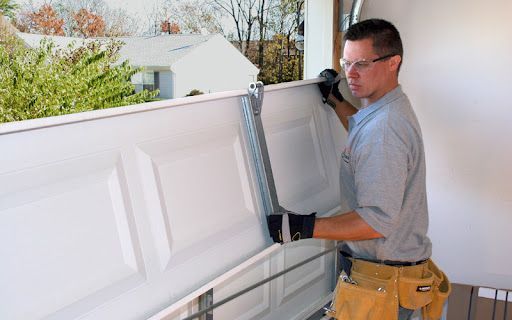
Even the best openers wear out. If you’ve reprogrammed it and issues persist, your opener may be at the end of its lifespan.
Warning Signs That Mean It’s Time to Replace:
- Over 10 years old
- Lifespan of most openers is 10–15 years
- Older units lack safety tech and rolling code security
- Loud grinding or rattling
- Belt or chain is loose, worn, or rusted
- Indicates motor strain or misaligned track
- Slow to respond or stalls mid-operation
- Could be a failing motor or capacitor
- Randomly opens or closes
- Possible short circuit in logic board
- Dangerous and urgent safety concern
- Safety reversal system doesn’t trigger
- Failing
photo-eye sensors or faulty
limit switch
- Wall button works but remotes don’t, despite reprogramming
- Antenna damage or circuit board failure
Understanding the Limit Switch & Photo-Eye Sensor Failures
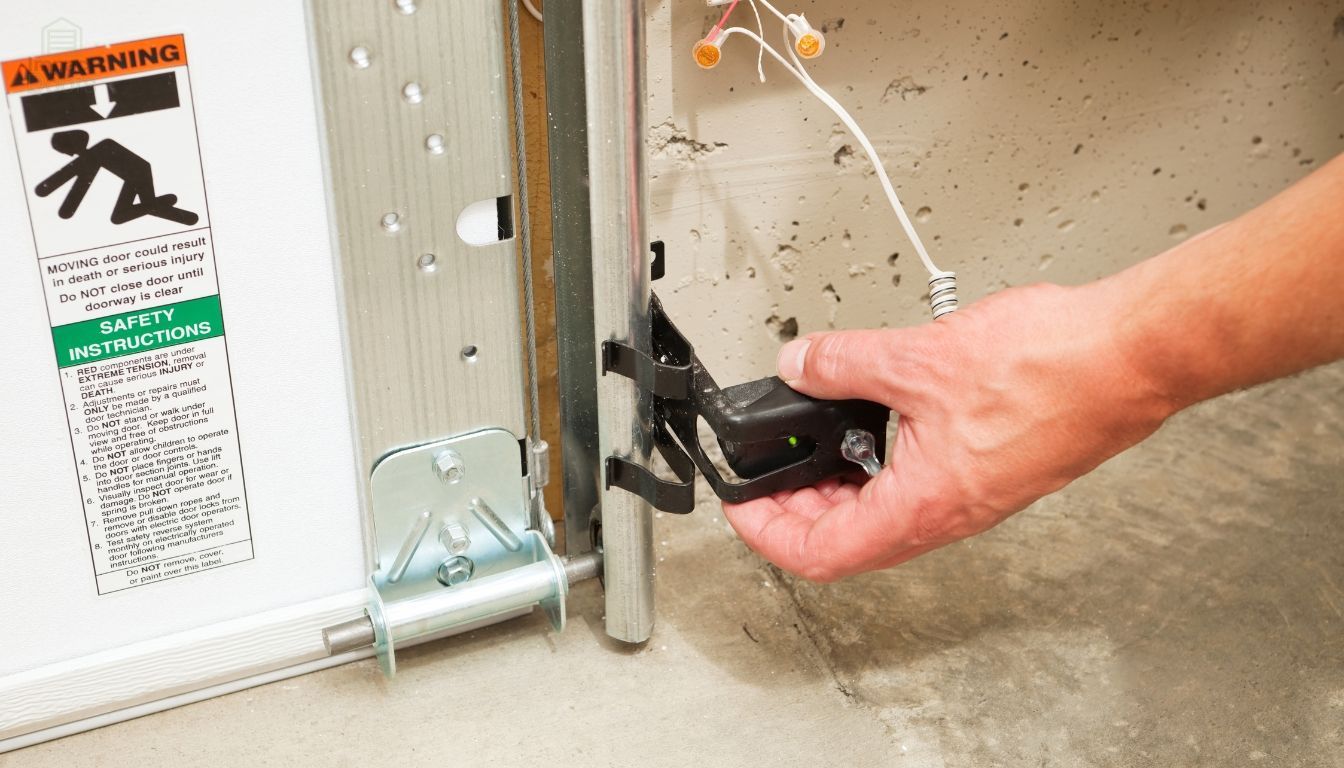
These two components are critical for safety and performance:
- Limit Switch
- Tells the opener when to stop opening or closing
- If damaged, the door may slam or not close completely
- Photo-Eye Sensors
- Detect objects or people in the path
- Dirty or misaligned sensors may cause random reversals or failure to close
If either system fails, the opener becomes unsafe—replacement is the safest option.
Choosing a New Opener in Colorado

At Smart Garage Door, we help homeowners select models that stand up to local conditions. If you’ve already reprogrammed your system and problems persist, it’s natural to wonder: can I upgrade my garage door opener without replacing the entire door? In many cases, yes. If your existing door operates smoothly and safely, a new opener—especially one with smart features, can be installed independently.
What to Look For:
- Drive System
- Belt drive = quietest (great for homes with rooms above the garage)
- Chain drive = rugged and reliable
- Screw drive = good for wide, heavy doors
- Motor Strength
- Standard = 1/2 HP (most homes)
- Heavier doors = 3/4 HP or higher
- Safety Features
- Rolling code technology to prevent hacking
- Safety reversal sensors and alert systems
- Auto-close timers and lockout options
- Smart Features
- If you're upgrading, now’s the time to consider
smart garage door compatibility. Modern openers can integrate with Alexa, Google Home, and smartphone apps—allowing remote access, real-time alerts, and auto-closing based on your location. These features aren’t just convenient; they can add a layer of security and peace of mind for Colorado homeowners often away for work, travel, or weekend getaways.
Climate Considerations:
- Battery backup
- Essential for power outages (required by code in some areas)
- Cold-resistant grease & components
- Keeps parts moving in freezing temperatures
- Weather-sealed housing
- Prevents internal corrosion from condensation or humidity
Budget vs Premium:
- Basic Models
- Under $200
- Ideal for low-traffic garages or rental properties
- Mid-Range
- $250–$400
- Quieter, smoother, includes smartphone compatibility
- Premium Units
- $500+
- Smart Wi-Fi, built-in cameras, motion detection, voice control
Garage Opener Maintenance Tips
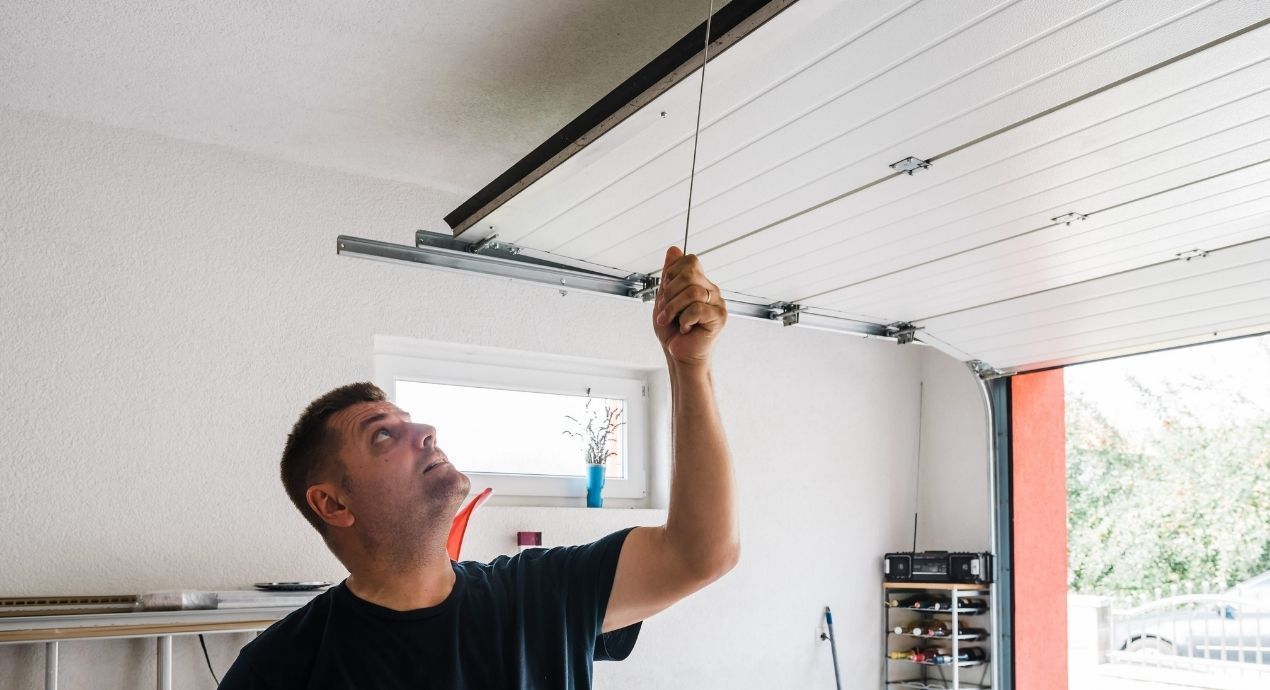
Want to avoid costly replacements? Stay on top of regular upkeep.
Monthly Visual Checks:
- Look for
frayed belts, loose chains, or worn hardware
- Check for
light blinking on sensors (means misalignment)
- Test safety reversal by placing a piece of wood in the door’s path
Every Season:
- Lubricate tracks and rollers with silicone-based spray
- Wipe photo-eyes clean with a dry cloth
- Tighten bolts and brackets
- Test manual release cord to make sure it disengages smoothly
Colorado Maintenance Calendar:
- Fall – Prepare for frost: clean sensors, check battery backup
- Winter – Watch for frozen parts and frost on rails
- Spring – Inspect for storm damage and rust
- Summer – Clean out dust and test sensor alignment in full sunlight
Troubleshooting Quick Checklist
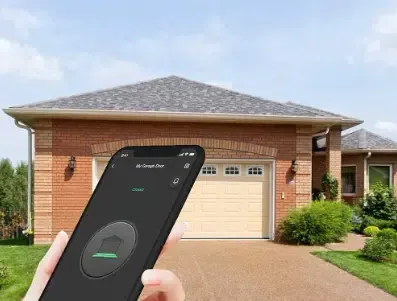
Here’s a rapid scan guide to get you started:
- Remote not working? → Try fresh batteries, reprogram remote
- Opener doesn’t respond at all? → Check power outlet and GFCI reset
- Wall button works, remote doesn’t? → Check antenna or reprogram remote
- Door stops halfway? → Limit switch or track obstruction
- Door reverses immediately? → Dirty or misaligned photo-eye sensors
- Door opens by itself? → Faulty logic board or interference


